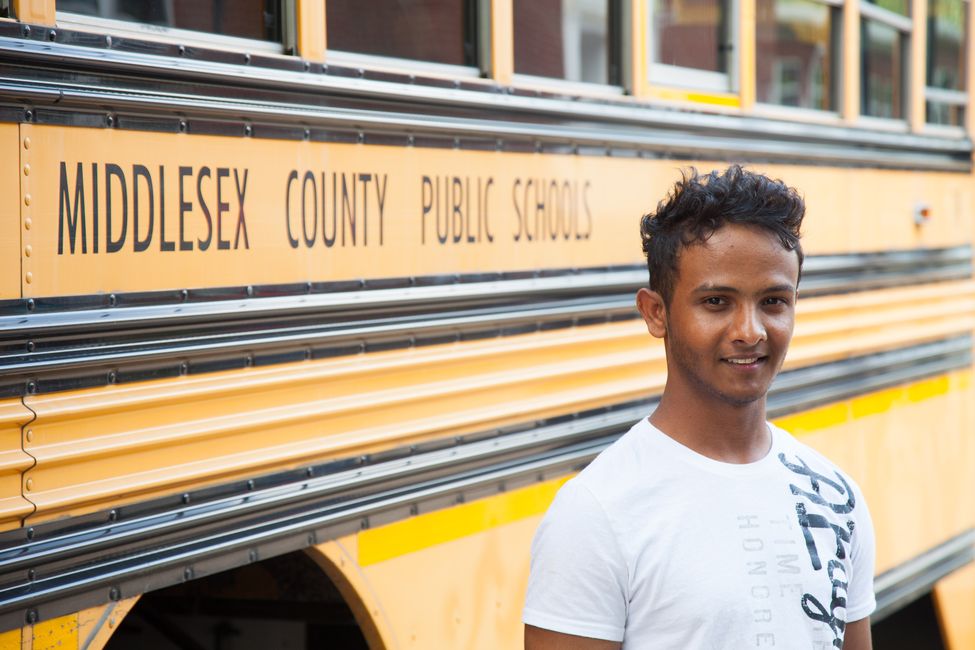How to Help Your Exchange Student Get Around
Originally published Jan. 5, 2020. Last updated Oct. 10, 2025.
CIEE BridgeUSA High School participants aren't allowed to drive. As such, host families are expected to help their international student arrange transportation.
But don’t worry – this doesn't mean you must personally drive your student wherever they want to go! We tell our students that it's their responsibility to work with you to find appropriate transportation options for your area. No matter what type of community you live in, there are transportation options available.
Suburban and Rural Communities
In a suburban or rural environment, public transportation options may be limited. This will depend on where exactly you live. If a public bus system is available, your international student may take advantage of it. If not, there are still ways your international student can get around without relying solely on you and your personal vehicle:
- School bus: Many school systems offer bus transportation to and from school. Check with your school for more information about the route and schedule.
- Carpooling: International students are allowed to ride with classmates, friends, or family members. Since high school students are more likely to drive in a rural or suburban environment, this is one of the best ways for international students to get around!
- Biking: Biking is a cost-effective, easy, fun, and healthy way to get around. However, biking can be dangerous – especially on roads without bike lanes. If your international student plans to use a bike, be sure they know the rules.
- Walking: If your international student isn’t traveling a long distance, walking is one of the best ways to explore a community. However, it’s important that you go with your host student the first few times; that way, they can get a sense of their surroundings.
Tonya, from Arkansas, recognized the challenges that transportation would bring for her family, but chose to see it as an opportunity to get to know her students more:

“For the kids that I've had from Spain, the transition from a large area like Madrid to Arkansas – that's a small, rural community – it's pretty dramatic," she said. "They can't believe how much space there is here, how much room and how much area there is to grow, to go walk around. One limitation that they have is transportation. They have unlimited transportation in Spain, so to come here and then have to drive wherever we go is a big challenge. I'll take them anywhere they want to go. I think that's also family time, too. You talk, you laugh, you turn the radio up really loud. You have a really good time. Take the tops off the Jeep and travel.”
Urban Communities
Generally, urban communities have alternative and public transportation options available. In fact, many people living in an urban environment don’t drive at all! Hosting an international student doesn’t need to change that. Show your international student how to use modes of alternative or public transportation, which may include:
- Subway: If your international student plans to use the subway, show them where your stop is, how to buy a ticket, and how to navigate the system. You may want to ride with them a few times as they learn.
- Bus: Many cities have far-reaching public bus networks. As with the subway, you should show your student how to use the system before they go it alone. Just ride with your student a few times as they learn! (Alternatively, your school system may provide bus service to students. If so, check with your school to find the nearest stop.)
- Biking: Biking can be a cost-effective and easy way to get around the city. If your international student plans to bike, be sure they know the rules.
- Walking: If your international student isn’t traveling a long distance, traveling by foot is probably the best way to get around a city. Show them the way the first few times, then let them explore!
Kristine, from Omaha, Nebraska, lives in a neighborhood with great bike trails. She encouraged her student from Switzerland to get comfortable riding his bike with his host brother and friends to a local shopping area if they wanted to do something.

“[The kids] will take the bike trail and ride their bikes up to the Aksarben neighborhood, which is a really cool area where they have a big park, and they have lots of shops and restaurants," Kristine said. "They have an ice cream shop and cupcake shop and pizza places. And the movie theater's there. They'll go and ride their bikes up there and go to a movie during the day, so it's a lot of fun.”
It’s important to remember that many international students come from urban environments and are used to moving around independently. As such, it helps to establish expectations around transportation so you and your international student both understand how they'll get to and from school and extracurricular activities. It’s also important that you – as the host family – help acquaint your international student with these modes of transportation. Guide them through the process. Go with them the first few times. Help them navigate. Soon enough, they’ll be self-sufficient!
Ready for the adventure of a lifetime? Start your host family application today!

